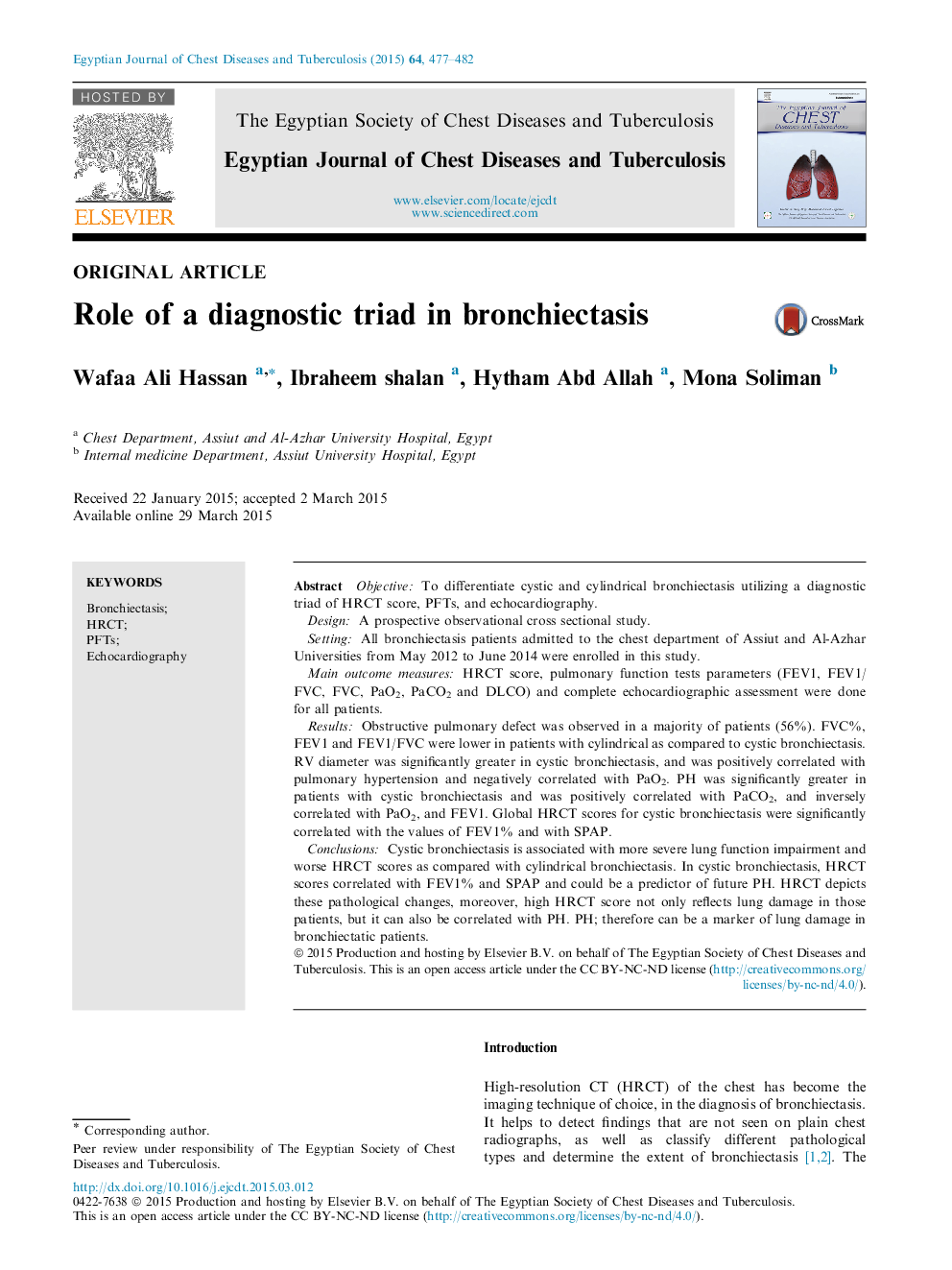| Article ID | Journal | Published Year | Pages | File Type |
|---|---|---|---|---|
| 3399997 | Egyptian Journal of Chest Diseases and Tuberculosis | 2015 | 6 Pages |
ObjectiveTo differentiate cystic and cylindrical bronchiectasis utilizing a diagnostic triad of HRCT score, PFTs, and echocardiography.DesignA prospective observational cross sectional study.SettingAll bronchiectasis patients admitted to the chest department of Assiut and Al-Azhar Universities from May 2012 to June 2014 were enrolled in this study.Main outcome measuresHRCT score, pulmonary function tests parameters (FEV1, FEV1/FVC, FVC, PaO2, PaCO2 and DLCO) and complete echocardiographic assessment were done for all patients.ResultsObstructive pulmonary defect was observed in a majority of patients (56%). FVC%, FEV1 and FEV1/FVC were lower in patients with cylindrical as compared to cystic bronchiectasis. RV diameter was significantly greater in cystic bronchiectasis, and was positively correlated with pulmonary hypertension and negatively correlated with PaO2. PH was significantly greater in patients with cystic bronchiectasis and was positively correlated with PaCO2, and inversely correlated with PaO2, and FEV1. Global HRCT scores for cystic bronchiectasis were significantly correlated with the values of FEV1% and with SPAP.ConclusionsCystic bronchiectasis is associated with more severe lung function impairment and worse HRCT scores as compared with cylindrical bronchiectasis. In cystic bronchiectasis, HRCT scores correlated with FEV1% and SPAP and could be a predictor of future PH. HRCT depicts these pathological changes, moreover, high HRCT score not only reflects lung damage in those patients, but it can also be correlated with PH. PH; therefore can be a marker of lung damage in bronchiectatic patients.
